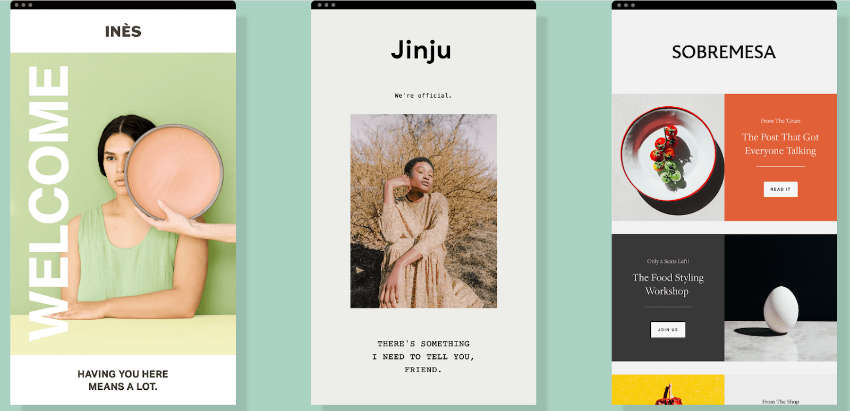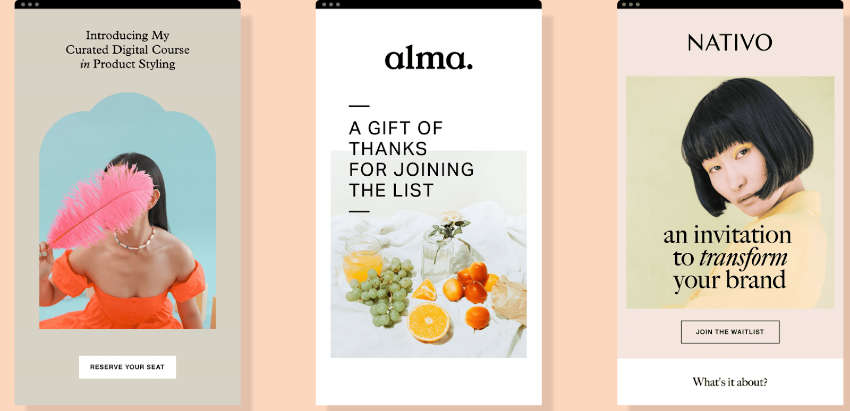Show:
How to Win at Email Marketing with a Simple Newsletter Plan
One of the most effective methods to engage with your audience and produce leads is through email marketing. It’s a low-cost strategy to generate new business and strengthen current relationships with prospects and clients.
In reality, sending emails allows you to build one-to-one communication with a specific group of individuals, which is more successful and convincing than using generic communication methods.

However, if you’re new to email marketing, it can be hard to know where to start. In this article, I’ll show you how to build a simple email newsletter plan to help you grow your business.
Let’s get right to it.
What is a newsletter?
A newsletter is an email that you may send to clients to keep them up to date on your company’s latest products and services, as well as special offers and corporate news.
How to plan an effective newsletter strategy
The key to a successful mailing strategy is to plan ahead of time and in detail. Here are some of the most important actions to follow in order to do this.
1. Set out your goals
Setting your goals is one of the first things you should do when designing your mailing strategy. This means you should know exactly what you want to accomplish with your newsletter campaign.
So you could wish to increase traffic to your website, increase sales, and so on.
Defining your objectives can assist you in better shaping your plan to attain them.
2. Define your KPIs
Once you’ve determined your objectives, identify the KPIs you’ll use to evaluate the efficacy of your mailing campaign and determine whether you got the outcomes you wanted.
For instance, some or all of the following email marketing KPIs can be taken into account:
- Open Rate (OR)
- Click-through rate (CTR)
- Unique clicks and unique open rate (UOR)
- Email bounce backs
- Unsubscribe rate
- Conversion rate
- Return on investment (ROI)
3. Build a contact list
The following step is to make a contact list.
Although it appears to be an easy activity, it requires a great deal of effort and commitment.
In reality, in order to deliver the right content to the right individuals, you’ll need to precisely segment your email list.
So, if you run a fashion internet business, you could wish to send emails to ladies regarding female fashion clothes.
The more you can segment your list in detail, the better your campaign’s outcomes will be.
4. Take a look at the best newsletter examples

From Flodesk’s website – https://flodesk.com/blog/newsletter-examples/
It’s a good idea to look at several samples of newsletters before generating your own, especially if you’re a newbie or have no expertise with newsletter writing.
You’ll be able to identify which phrases have the most impact on you, in addition to getting creative inspiration.
Flodesk newsletter examples will help you come up with ideas for your next newsletter campaign.
5. Choose your newsletter software
Clearly, you’ll need to find competent, dependable newsletter software to create your email campaign effectively.
Nowadays, the internet offers a wide range of options to meet every business requirement, budget, or taste.
In general, newsletter software differs from one another in terms of customization choices, price, integrations, and so on.
So, make sure to choose one that aligns with your needs and preferences.
6. Creating a newsletter
The following step would be to create a newsletter. This process entails designing the layout, copy, CTAs, and all other elements of your newsletter campaign.
You may either start from scratch or use templates that you can customize to fit your purpose, brand identity, and demands.
7. Find the optimal sending time
Sending time is critical when it comes to email marketing. In reality, sending emails at the incorrect time may result in no one or only a few individuals seeing and responding to them.
As a result, research your target audience’s typical age, interests, and occupation. Then, try to think about how busy they could be at certain times of the day, and send your emails at a time when they might be able to pay more attention to them.
Essential elements of an effective and outstanding newsletter
Now that you know what steps to take in order to create and execute a winning newsletter plan, it’s worthwhile to know the essential elements of an effective newsletter.
Below are listed some of the most relevant ones.
1. Design – Craft an outstanding design

From Flodesk’s website – https://flodesk.com/
The email design is one of the factors that impact the success of an email campaign. One of the first things recipients will notice is the design before going into the content and taking any action.
As a result, you must pay close attention to it.
Colors, picture count, and style all play a role in determining the style and appearance of your emails.
You may either stick with your current brand style, such as colors and fonts, or reinvent it and try something new.
2. Subject lines – Write strong and persuasive subject lines
The subject line is the first thing a recipient sees when they open an email. You can see how important it is to the open rate measure from this. In reality, recipients determine whether or not to read your email depending on the efficacy and content of the subject line.
As a result, you should make sure that your subject line is short and contains persuasive phrases in order to convince your readers that opening your email is worthwhile.
3. Preview text – Create a captivating preview text
Users may now see not just the subject line but also the preview content in their emails. This text can be used to provide further information about your email.
When the subject line captures the user’s interest, the preview content is what prompts them to open your email.
As a result, if you write this content persuasively, you’ll almost certainly increase the open rate.
4. Conciseness – Keep your text concise

From Flodesk’s website – https://flodesk.com/
Nobody enjoys opening an email and being greeted with a wall of text.
As a result, you should make your email’s content as digestible and accessible as possible.
Use only a few lines of text, make good use of white space, and use bullet lists when appropriate. Also, without going overboard, utilize visuals to break up the text into smaller parts.
5. Storytelling – Leverage the power of storytelling
Storytelling is the finishing touch that elevates and enhances every piece of content. As a result, you may use it to express your message in your emails by telling a story or delivering it in a series of emails.
6. Relevance- Focus the content on your readers
Your email’s content should not just focus on your company and offer; rather, it should focus on what would be of interest to your readers.
As a result, be sure to offer them content that applies to them, as this may encourage them to do the action that your email campaign is aiming for.
7. Call to Action – Guide your recipients to take action

From Flodesk’s website – https://flodesk.com/
You should spend time creating amazing content for your emails, but at the end of the day, call-to-actions (CTAs) are what hold customers’ attention.
CTAs also inspire customers to take the action that best represents your company’s goal (a purchase, download, subscription, etc.).
As a result, CTAs require the same level of attention as your content.
They must be brief, captivating, and concise. Keep your CTAs to a maximum of one or two words.
CTAs that are overly long may confuse your customers in addition to being aesthetically unappealing.
8. Personalization – personalize each of your emails
Users struggle to notice anything since they are bombarded with information every day.
Personalization, on the other hand, holds sway.
Addressing visitors by name and generating personalized incentives might help your content gain more attention and interaction.
Emails are perfect for putting personalization to work. You may address your readers by their first names and write to them as if you were speaking with a friend, offering them helpful information, offers, and updates.
The more information you have on your prospects, the better. As a result, make sure you’re always learning new things about them, such as analyzing their prior purchases, conducting searches, polling them, and so on.
Conclusions
Email marketing is a powerful method for generating leads, converting consumers, and increasing brand recognition and reputation if done correctly.
There are various strategies to build up a successful newsletter plan and generate excellent newsletters, as described throughout this blog post.
Personalization and content relevancy are only two of them.
Thank you for taking the time to read this article. Hopefully, you found it interesting and informative.
If you want to read more, please check out this article on the best three web tools to take your email skills to the next level.
About the author:
Flavia Silipo is a skilled SEO copywriter and digital marketing specialist with over two years of experience. You can find her on LinkedIn.

 Return to Previous Page
Return to Previous Page








